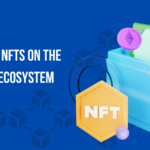Cryptocurrency has captured the imagination of millions worldwide, offering a new way to think about money, funding, and digital transactions. If you’re new to the world of crypto, this guide will break down the essentials, helping you understand what cryptocurrencies are, how they work, and how you can get started on your journey into the digital currency landscape.
What is Cryptocurrency?
At its core, cryptocurrency is a form of digital or virtual currency that uses cryptography for security. Unlike traditional currencies issued by governments (known as fiat currencies), cryptocurrencies operate on a technology called blockchain.
Understanding Blockchain Technology
Blockchain is a decentralized ledger that records all transactions across a network of computers. It ensures transparency and security, as every transaction is verified by multiple parties before being added to the chain.
In simpler terms, think of blockchain as a digital notebook that everyone can see and verify, making it nearly impossible to alter past entries without consensus from the network.
Why Use Cryptocurrency?
The rise of cryptocurrencies can be attributed to several factors that differentiate them from traditional currencies and funding vehicles:
a. Decentralization
Most cryptocurrencies are decentralized, meaning they are not controlled by any central authority, like a government or bank. This gives users more control over their assets and can reduce risks related to centralized banking failures.
b. Security
Cryptocurrencies use advanced cryptographic techniques to secure transactions. This makes it challenging for hackers to alter transaction data, providing a level of security that traditional banking systems often struggle to match.
c. Anonymity and Privacy
While all transactions are recorded on the blockchain, users can remain anonymous. Depending on the cryptocurrency, it can offer varying degrees of privacy, allowing individuals to transact without revealing personal information.
d. Lower Transaction Fees
Many cryptocurrencies have lower transaction fees compared to traditional banking systems, especially for international transfers. This can make them appealing for users looking to save money on fees.
Different Types of Cryptocurrencies
While Bitcoin is the most recognized cryptocurrency, thousands of alternatives, known as altcoins, are available. Here are some of the most popular types:
a. Bitcoin (BTC)
Launched in 2009, Bitcoin is the first and most well-known cryptocurrency. Often referred to as digital gold, Bitcoin has a limited supply, making it a deflationary asset.
b. Ethereum (ETH)
Ethereum is more than just a cryptocurrency; it’s a platform for building decentralized applications (dApps) and smart contracts. These contracts automatically execute when certain conditions are met, enabling a wide range of applications.
c. Ripple (XRP)
Ripple is designed for facilitating international payments and aims to provide a faster and more efficient alternative to traditional banking systems. It’s widely used by financial institutions for cross-border transactions.
d. Litecoin (LTC)
Created as the silver to Bitcoin’s gold, Litecoin offers faster transaction confirmation times and a different hashing algorithm. It aims to be a practical cryptocurrency for everyday transactions.
e. Stablecoins
Stablecoins are cryptocurrencies pegged to a stable asset, such as the US dollar. They aim to reduce the volatility typically associated with cryptocurrencies, making them useful for transactions and as a store of value.
How to Buy and Store Cryptocurrency
Getting started with cryptocurrency involves a few key steps:
a. Choosing a Cryptocurrency Exchange
To buy cryptocurrency, you’ll first need to select a cryptocurrency exchange. Some popular exchanges include:
- Coinbase: User-friendly and great for beginners.
- Binance: Offers a wide range of cryptocurrencies with lower fees.
- Kraken: Known for its security features and range of altcoins.
When choosing an exchange, consider factors such as user interface, fees, security, and the variety of cryptocurrencies offered.
b. Setting Up a Wallet
Once you’ve purchased your cryptocurrency, it’s essential to store it securely. There are two primary types of wallets:
- Hot Wallets: These are online wallets that are connected to the internet. They are convenient for frequent trading but can be more vulnerable to hacks.
- Cold Wallets: These are offline storage options, such as hardware wallets or paper wallets. They offer enhanced security, making them ideal for long-term storage.
c. Making Your First Purchase
After selecting an exchange and setting up a wallet, you can make your first cryptocurrency purchase. Follow the exchange’s instructions to buy your desired cryptocurrency, and transfer it to your wallet for safe keeping.
Understanding Cryptocurrency Trading
Once you’re familiar with buying and storing cryptocurrencies, you may want to explore trading. Here’s what you need to know:
a. Types of Trading
- Day Trading: Buying and selling cryptocurrencies within the same day to take advantage of price fluctuations.
- Swing Trading: Holding onto assets for a few days or weeks to profit from expected price movements.
- Long-Term Investing: Buying cryptocurrencies with the intention of holding them for months or years, hoping for substantial appreciation in value.
b. Technical Analysis
To make informed trading decisions, many traders use technical analysis. This involves studying price charts, patterns, and indicators to forecast future price movements. Common tools include:
- Candlestick Charts: These provide insights into price trends over specific periods.
- Moving Averages: These help smooth out price data to identify trends.
c. Risk Management
Effective risk management is crucial in cryptocurrency trading. Here are some strategies:
- Diversification: Spread your funding across different cryptocurrencies to reduce risk.
- Stop-Loss Orders: Set predetermined prices at which to sell your assets to limit potential losses.
Risks and Challenges of Cryptocurrency
While cryptocurrency presents exciting opportunities, it also comes with its share of risks and challenges:
a. Market Volatility
Cryptocurrencies are notoriously volatile, with prices often experiencing dramatic swings. This can lead to significant gains or losses within short periods.
b. Regulatory Uncertainty
The regulatory environment for cryptocurrencies is still evolving. Changes in regulations can impact the market, and investors need to stay informed about legal developments.
c. Security Risks
While blockchain technology is secure, exchanges and wallets can be vulnerable to hacking. Always use reputable platforms and consider storing your assets in cold wallets for added security.
d. Scams and Fraud
The crypto space has seen its fair share of scams. Be wary of unrealistic promises and conduct thorough research before investing in new projects.
The Future of Cryptocurrency
The future of cryptocurrency looks promising, with numerous trends and developments on the horizon:
a. Mainstream Adoption
As more businesses accept cryptocurrencies as payment and financial institutions integrate blockchain technology, mainstream adoption is expected to grow.
b. DeFi (Decentralized Finance)
DeFi is revolutionizing the financial sector by enabling users to lend, borrow, and trade without intermediaries. This movement has the potential to make financial services more accessible and efficient.
c. NFTs (Non-Fungible Tokens)
NFTs represent unique digital assets and have gained popularity in art, gaming, and entertainment. They offer new ways for creators to monetize their work and connect with audiences.
Conclusion
Cryptocurrency is an exciting and rapidly evolving field that offers opportunities for both funding and innovation. By understanding the basics—what cryptocurrencies are, how to buy and store them, and the risks involved—you can confidently navigate this digital landscape.
As you embark on your cryptocurrency journey, remember to stay informed, conduct thorough research, and practice responsible investing. The world of crypto is vast and full of potential; with the right knowledge and approach, you can make the most of your experience.







